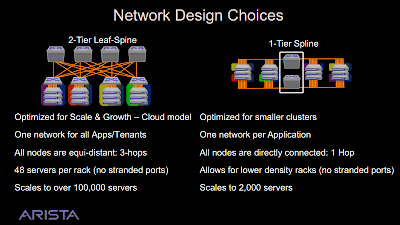


Impact analysis is the process of identifying overlay networks affected by the underlying faulty physical networks. The Network Monitoring service also performs impact analysis.

In addition to providing health information, the monitoring service also reports vital statistics such as network loss, latency, device CPU/memory usages, link utilization, and packet drops. For instance, device groups can be racks or subnets or simply host groups. Device groups are a combination of physical devices which has some relevance within the datacenter. Devices are, for example, physical switches and routers. Health is reported based on both active and element data. The monitoring system reports health of both devices and device groups. For example, the service monitors link state, system restarts, and Border Gateway Protocol (BGP) peer status. The monitoring service collects a limited set of critical data available through public management information bases (MIBs). The solution leverages advanced algorithms to identify both network paths and devices in the paths that are causing performance degradation.Įlement data is collected using Simple Network Management Protocol (SNMP) polling and traps. The Network Monitoring service attempts to localize devices that are causing network loss and latency.

A key aspect of this solution is fault localization. The Network Monitoring service automatically determines the network points between which traffic must be sent, the quantum of traffic to be sent in order to cover all network paths, and also the loss/latency baseline and deviations over a period of time. Physical network monitoring is performed using both active network and element data.Īctive network data, such as network loss and latency, is detected by sending network traffic and measuring round-trip time. The Network Monitoring service uses the network object model, provided by the topology service, to determine the network devices and links to be monitored. This Network Controller feature allows you to monitor the physical and virtual network in your datacenter stamp or cluster.


 0 kommentar(er)
0 kommentar(er)
